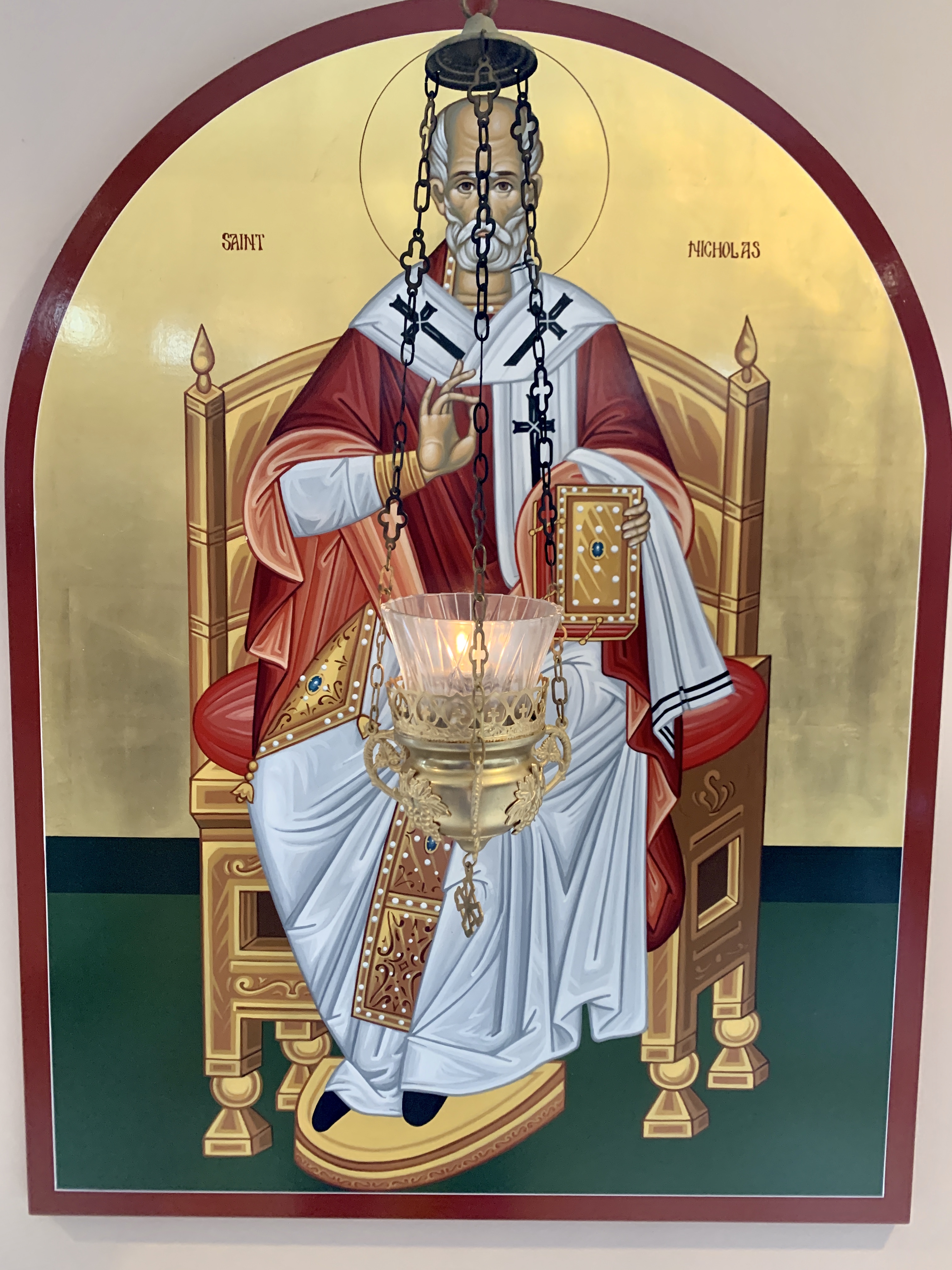 One can easily say that the greatest saint of the Byzantine Church is Nicholas the Wonderworker, Archbishop of Myra in Lycia. Yet the only thing we know of him for certain is his name, and that a holy man named Nicholas was the bishop in Myra in the fourth century. He has become essentially connected with the feast of Christmas. While the details of his life are certainly legendary, the first appearance is the Vita per Michaelem, in the ninth century, and then by Simeon Metaphrastes in the tenth century, yet we cannot help but suspect that there is a tradition of the goodness of his character that prompted such stories. He is the a golden example of all that is good in a true Christian, following the Lord in love for the poor, in joy of salvation, and in greatness of heart. Where, then, the stories written to fit his character. Certainly, the human race is hungry for such a saint, explaining his embrace by Greece and Russia as their patron saint. He gave a dowry to the poor girls, he saved sailors from storms, he obtained the liberation of those falsely accused. When his body was taken from Myra to Bari, the goodness of his life made him a favored saint throughout all the West.
One can easily say that the greatest saint of the Byzantine Church is Nicholas the Wonderworker, Archbishop of Myra in Lycia. Yet the only thing we know of him for certain is his name, and that a holy man named Nicholas was the bishop in Myra in the fourth century. He has become essentially connected with the feast of Christmas. While the details of his life are certainly legendary, the first appearance is the Vita per Michaelem, in the ninth century, and then by Simeon Metaphrastes in the tenth century, yet we cannot help but suspect that there is a tradition of the goodness of his character that prompted such stories. He is the a golden example of all that is good in a true Christian, following the Lord in love for the poor, in joy of salvation, and in greatness of heart. Where, then, the stories written to fit his character. Certainly, the human race is hungry for such a saint, explaining his embrace by Greece and Russia as their patron saint. He gave a dowry to the poor girls, he saved sailors from storms, he obtained the liberation of those falsely accused. When his body was taken from Myra to Bari, the goodness of his life made him a favored saint throughout all the West.
In the West, he has become secularized as “Santa Claus,” (possibly from early Dutch settlers, who would have known him “Sinterklass”). A poem by Thomas Nast in 1823, has been influential in the legend that he lives at the North Pole, and distributes toys to children on Christmas eve or early Christmas morning. This image, unfortunately, has sometimes been commercialized to sell products to be given as gifts.
As Christians, we surely recognize him as a saint, a bishop in Christ’s body, the Church. Perhaps from the visit of the Magi, giving gifts, and the legend of his life, of giving gold as a dowry have connected him with gift-giving. Gift-giving can be a sign of Christian love, as our Lord taught, as related by St. Paul: “Keep in mind the words of the Lord Jesus who himself said, ‘It is more blessed to give than to receive.’” (Acts 10:35) In giving gifts, we, together with the Magi, recognize the image of Christ in all people. In imitating the saints, we are brought closer to Christ. Is it not true, then, that on our Holy Father Nicholas and in the secularized Santa Claus, we see the same virtues: joy in life, generosity, love for all people, sincerity and truthfulness? Do we not also see in our Holy Father Nicholas and in the secular Santa Claus, the ability to perform wonders?